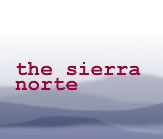The glossary below contains several terms in Quecha, a Peruvian Indian language,
though the majority of words are Spanish.
| adobe |
sun-dried mud bricks |
| agencia |
office/secretariat of the agente and other
community officials; can be at the municipal level |
| agente |
most senior political authority in a community (an elected
position) |
| águila/ aile |
aguilameans eagle; “eagle wood” is valued for timber, watershed
protection and soil improvement, from Alnus jorullensis,
Alnus acuminata tree species |
aile |
see aguila |
agua rodada |
(literally travelled water); water for irrigation that used
to be transported through wooden or reed channels |
alcalde |
high-ranking official in cargo system; duties are
both religious and civil |
alcatraz |
Calla lily with broad trumpet-like flower, Zantedeschia
|
amarillo |
(literally yellow); traditional Oaxacan sauce or stew |
armadillo |
Dasypus novemcinctus |
arroba/
arrobita |
measurement equivalent to 12kg |
| asamblea/
asamblea general |
main decision-making body in the community, in which all
comuneros or ciudadanos take part |
| atole |
pre-Hispanic drink made from corn that is cooked, ground,
strained and boiled |
| brizia |
probably Brizia maxima or “Big Quaking Grass” ;
annual grass grown for its bronze-coloured flower panicles |
| cacomixtle |
small nocturnal animal with distinctive long black-ringed
tail, Bassaricus astutus ; sometimes called ringtail
cat but actually related to the raccoon |
canoitas |
small irrigation channels made from natural material such
as reed or wood |
| cargo |
(literally position): system of unpaid community service
duties. The different cargos include alcalde, mayordomo,
topil etc. |
| cartucho / cartuchito |
flowering plant, non-indigenous, Argylia radiata ;
much cultivated in cool and humid areas of the Sierra Norte
|
| catrin/
catrines |
“dandies”; used here to mean apparitions of the devil dressed
in elegant clothes |
centavos |
cents |
| chachalaca |
(literally chatterbox), long-tailed, ground-dwelling bird,
Ortalis vetula |
| chingre |
traditional alcoholic drink made from fermented sugarcane
|
| ciudadano |
literally citizen: male, whose voice or vote counts in community
decisionmaking |
| coati |
raccoon-like mammal with long black and white tail, Nasua
narica |
| comal |
flat clay or metal pan or griddle on which tortillas are
baked |
| comisario/ comisariado |
community official; see comisariado de bienes comunales
|
| comisariado de bienes comunales |
official in charge of community property, particularly land
and natural resources (sometimes known as representante
communal); also the office/committee with this responsibility
|
| comunero |
registered community member with rights and responsibilities
|
CONASUPO |
Comisión Nacional de Subsistencias Populares (National
Commission of Basic Provisions) ; government shops providing
basic provisions |
| díade reyes |
see fiesta de los reyes |
| fiesta de los reyes / día de reyes |
(literally fiesta of the (three) kings); Epiphany
|
| fiesta de muertos |
Day of the Dead;originating in prehispanic Mexico,
now celebrated in November, a festival when Mexican families
remember their dead, and the continuity of life |
| fiscales |
cargo position that involves activities related
to the church |
| flor de niño |
literally child’s flower ; see niño |
INI |
National Indigenous Institute ; in July 2003, became
Comisión Nacional Para El Desarrollo De Los Pueblos Indígenas
|
| jonote |
‘umbrella’ tree, Heliocarpus species, tiliaceae
family; Tilia mexicana is found in montane cloud forest,
has medicinal use |
| Liga Feminil |
Women’s League, which organises activities of benefit to
the community |
| madroño |
Arbutus menziesii, tree/shrub native to region,cultivated
for ornament (leaves, flowers, berries), brown dye and tannin
(bark) and for furniture (hardwood) ; Ericaceae
(heather) family |
| maguey |
agave, aloe-like plant, about 1 metre high ;
spikey leaves and fibrous trunk. Fibre used for making hammocks,
rope, baskets etc; also basis of alcoholic drink |
| mancomunados/ pueblos mancomunados |
communities that share land, in this case Lachatao and Amatlán,
both of which are joined with Yavesía |
| manta |
coarse cotton cloth traditionally used for making clothes
|
| martha |
type of coati, nocturnal long-tailed, raccoon-like
mammal, Potos flavus |
| mayordomo |
person responsible for arranging community festivals ;
cargo position |
| mezcal |
traditional Oaxacan alcoholic drink made from the maguey
plant (Agave species) |
| metate |
pre-Hispanic three-legged sloped rock and grinding stone,
used to grind cacao beans, corn etc |
| molinillo |
Wooden stick with rings used to whisk hot chocolate and
create cap of foam or froth |
| mozo |
worker, helper, servant |
municipal agencias |
agencias that are part of a municipality, in this
case Ixtlán de Juárez ; see agencia |
niño /flor de niño |
“child’s flower”; wild flower |
| nixtamal |
corn cooked in ashes and lime to soften it to make tortilla
dough |
| owner of the mountain |
Zapotec deity,Guzio,“the lord/owner of the mountains”, said
to live in the Sierra Norte and to take care of mountain people
and their resources |
| panela |
home-made, unrefined sugar, by-product of sugar production
used for sweetening, characteristic of this region |
paxle / paxlito |
wild flower |
| pesos |
currency |
| poleo |
“pennyroyal” , a kind of mint, used as a tonic and
anti-spasmodic; Mentha polegium |
| presidente |
municipal president – the highest authority in the municipality
|
presidente del consejo de vigilancia |
person in charge of keeping watch over the community’s land
|
PROFEPA |
Environmental Protection Agency, part of SEMARNAP |
| reforma agraria |
secretariat of the federal government institution in charge
of resolving land conflicts |
| regidor |
cargo official responsible for supervising topiles
and maintaining order in the community |
| revolution |
Mexican Revolution of 1910-1920, triggered in part by the
Mexican government’soppressionof the rural poor, and leading
to a prolonged power struggle. |
| salsa |
sauce |
| secretario |
secretary; cargo position with responsibility for
community correspondence, minute-taking, issuing certificates
etc; sometimes a municipal post |
SEMARNAP |
Department of the Environment, Natural Resources and Fisheries
|
| sector caracterizado |
senior group within the asamblea, formed of 25-30
people who have completed their cargos |
| servicio |
doing service, as in undertaking a cargo position
|
| síndico |
group of senior officials whose authority is second only
to that of the agente |
| son / sones |
dance accompanied by a chorus; broad term for Mexican regional
music and dance tradition, each region has its own distinctive
brand of son |
| suplente |
deputy |
| taco |
snack, filled tortilla |
| tamales |
traditional dish of ground maize with various fillings,
wrapped in banana or corn leaves |
tapir |
mammal with elongated snout, three-toed hind legs and four-toed
forelegs ; Tapiralla bairdi |
| tejamanil |
traditional rough pinewood planks or roofing tiles/shingles
|
| temazate |
a small deer; Mazama americana |
| tepache |
traditional Oaxacan alcoholic drink made from water, pineapple
and pulque (distilled from a species of maguey – Agave atrovirens)
|
| tepezcuintle |
large burrowing nocturnal rodent, hunted for meat; Cuniculus
Paca |
| tequio |
unpaid, obligatory collective work for the benefit of the
community |
| tierra caliente |
(literally hot lands); an area or zone in the territory
of Tiltepec with a hotter climate, as distinguished from tierra
templada (temperate) and tierra fría (cold). |
tlacuaches |
Mexican possom |
| troceras |
sharp woodcutting tools |
| topil / topiles |
junior cargo position; duties include helping to
keeporder in the community and running errands |
| tortilla |
maize-based flat bread |
| Tuxtepec paper mill |
the paper mill that had the logging concession in the forests
surrounding various communities in the Sierra Norte for approximately
25 years |
| wild pig |
Pecari tajacu |
| wild turkey |
Penelope purpurascens |
| Zapoteco |
one of 15 indigenous languages that exist in Oaxaca; considered
the most important as it is widely spoken in the Sierra Norte
|


